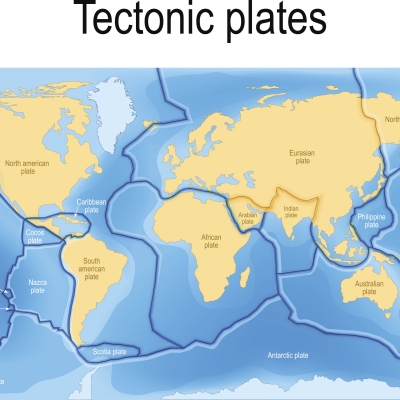
When we talk about tectonic or lithospheric plates, we mean the sections into which the lithosphere is cracked. The surface of the Earth is divided into 7 major and 8 minor plates. The largest plates are the Antarctic, Eurasian, and North American plates.
The mechanism by which tectonic plates move is still a subject of much debate among Earth scientists. The Earth is dynamic thanks to its internal heat, which comes from deep within the mantle from the breakdown of radioactive isotopes. It was long thought that this resulted in convection currents in the mantle which were responsible for the movement of tectonic plates across the Earth’s surface – indeed this is still the most common idea illustrated in many textbooks and on the internet. However, this theory is now largely out of favour, with modern imaging techniques unable to identify mantle convection cells that are sufficiently large to drive plate movement. Some plate models show that two thirds of the Earth’s surface move faster than the underlying mantle so there appears to be little or no evidence that convection currents in the mantle move plates (apart maybe from some very small plates in unusual circumstances).
Where slab pull is not the main plate driver, ‘ridge push’ is another possibility. As the lithosphere formed at divergent plate margins is hot, and less dense than the surrounding area it rises to form oceanic ridges. The newly-formed plates slide sideways off these high areas, pushing the plate in front of them resulting in a ridge-push mechanism.
Picture Credit : Google

